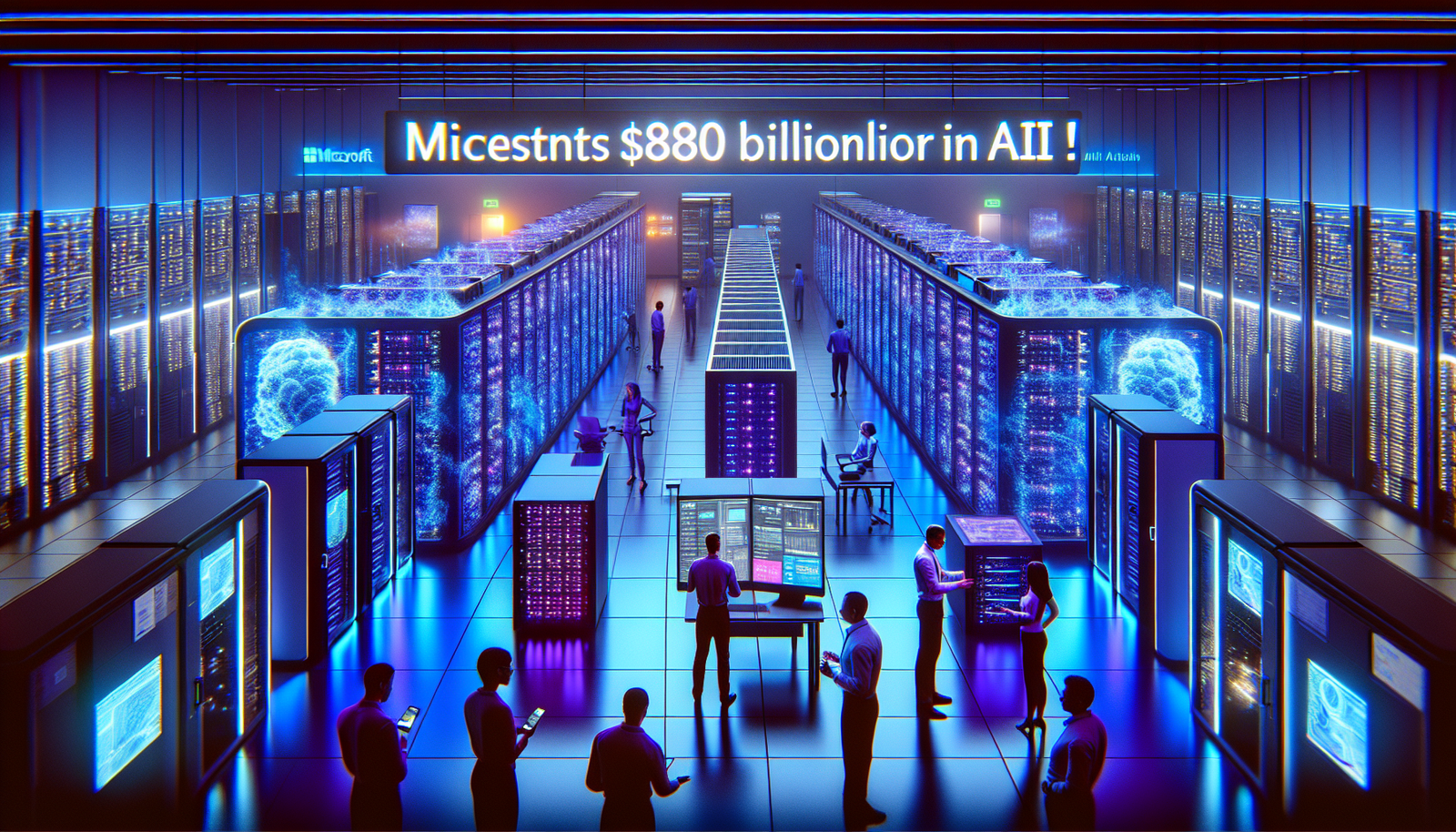Microsoft propels technological innovation with an astronomical investment of 80 billion dollars in its data centers. This strategic commitment aims to strengthen the infrastructures necessary for the development of artificial intelligence by 2025. The rapid advancements of the digital age require bold measures to ensure American supremacy in this crucial field. Machines specifically designed for training generative AI models will shape our future and transform our daily interactions.
Microsoft announces a colossal investment of 80 billion dollars
Microsoft has announced an ambitious plan to invest 80 billion dollars in its data centers by 2025. This exceptional amount will be dedicated to building and modernizing the infrastructures and technologies essential for the development of artificial intelligence. This project reveals the company’s ambition to establish itself as an undisputed leader in the field of AI, while strengthening its presence in the data market.
Targeted investments for the United States
Among these 80 billion dollars, half will be invested exclusively in the United States, demonstrating Microsoft’s intention to intensify its efforts in its domestic market. The funds will specifically be used to deploy machines designed for training generative AI models. This strategic choice aims to ensure a robust and responsive infrastructure capable of meeting the growing demand for AI solutions.
Brad Smith, in a detailed blog post, refers to this project as a historic turning point for American technology. According to him, it is crucial that the government supports this shift, a sine qua non condition to ensure American supremacy in this segment. He emphasizes that investment in university research must also be a priority to maximize this momentum.
Incentives for training and regulation
This massive plan also includes a significant component dedicated to employee training. Microsoft insists on the necessity to educate Americans on the use of new AI tools to mitigate job losses that this revolution could cause. The company is reaching out to the administration, highlighting the importance of a proactive approach in this area.
Beyond training, Brad Smith’s blog post calls for a relaxation of regulations. The suggested idea is that the private sector, without hindrance from regulators, can progress at its own pace. The fear of too much state intervention could slow down innovation and the development of vital AI tools.
Increased competition in the global market
In the face of the explosive rise of artificial intelligence, Microsoft positions itself as a rival to Chinese initiatives, which also benefit from considerable government support. The panel of conditions outlined by Brad Smith, including less regulatory pressure, seems designed to unleash the potential of American companies. The objective is clear: ensure competitiveness against the major global technology powers.
Discussions about the export of technologies are also at the heart of concerns. Microsoft intends to capitalize on its innovations not only in the United States but internationally. The company has already announced promises of cloud investments totaling 35 billion dollars over three years in 14 countries, demonstrating an aggressive strategy in the global AI market.
A promising future for artificial intelligence
With this massive investment, Microsoft is committing to an unprecedented evolution of its infrastructure. The arrival of new data centers will enhance processing capabilities, crucial for developing sophisticated AI tools. At the same time, the company is strengthening its existing partnerships, such as with OpenAI, to promote synergy between its AI projects and its infrastructures.
By 2025, Microsoft aspires to completely transform the technological landscape by placing AI at the heart of its strategic priorities. The goal is to establish a continuous innovation dynamic while maintaining a dominant position relative to its international competitors. Microsoft’s ambition could very well transform the digital sector as we know it today.
Frequently asked questions about Microsoft’s investment in artificial intelligence
What is the main goal of Microsoft’s 80 billion dollar investment?
The main goal of this investment is to strengthen the infrastructure of data centers necessary for the development and training of artificial intelligence models, in order to enhance cloud capabilities and digital innovation.
When will this investment be made?
Microsoft plans to deploy this investment by the end of 2025, focusing a significant portion of these funds on the development of data centers.
How much of this investment will be used in the United States?
Out of the 80 billion dollars, approximately half, or 40 billion dollars, will be allocated to data center projects located in the United States.
Does this investment only concern artificial intelligence?
Although this investment is primarily aimed at artificial intelligence, it also has implications for expanding cloud capabilities and optimizing data services as a whole.
What impact will this investment have on jobs?
Microsoft emphasizes the need to train more workers in AI technologies, as some transformations may lead to job losses, while others will emerge with the development of new skills in this area.
What specific technologies will be developed with this investment?
The investments will particularly target the development of machines dedicated to training generative artificial intelligence models and cloud resources that will facilitate their deployment.
How does Microsoft plan to ensure American supremacy in AI?
Microsoft appeals to the government to strengthen its support for AI innovation while highlighting the importance of a business-friendly environment to avoid overly restrictive regulations.
What are some examples of previous Microsoft investments related to AI?
In 2024, Microsoft promised to invest 35 billion dollars in 14 countries to strengthen cloud infrastructure, thus demonstrating its ongoing commitment to AI and the expansion of its capabilities.
How does this investment fit into the current global AI landscape?
In a context of increasing competition with countries like China, this investment by Microsoft aims to position the United States as a leader in the field of artificial intelligence and to face global technological challenges.






